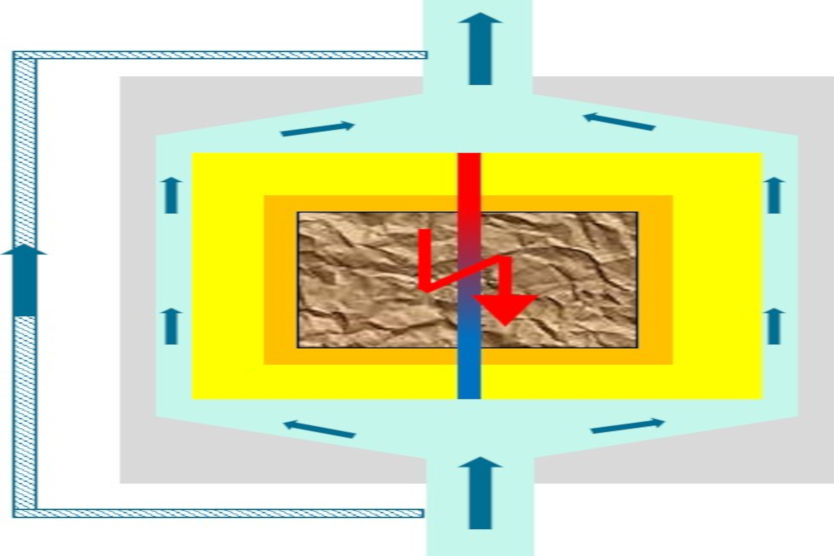
Schematic visualisaton of a central high temperature rock bed storage.
© Fraunhofer Institut für Bauphysik IBP
In Germany, twice as much electricity is generated from wind energy in winter than in summer. Although people heat more during the winter season, the strong winds that frequently occur in winter usually generate a surplus of electricity. Based on this correlation, a team of researchers led by the Fraunhofer Institute for Building Physics (IBP) is seeking to develop and optimize long-term, high-temperature stone storage systems and component-integrated, long-term storage facilities: the components of highly efficient buildings are to convert excess electricity into heat.
Statistically, there is a 95% probability of a new strong wind event with an average duration of 9 hours occurring every 13 days. The energy-efficient house should therefore be able to absorb and store as much energy during these approximately 9 hours in order to be able to provide heating and domestic hot water for nearly two weeks without having to resort to conventionally-generated electricity. For this purpose, a temperature range of 20-25°C (for residential use, for instance) is defined as a fixed-room target temperature, which allows the building to be heated to a higher temperature when there is a strong wind. Buildings with heavy sand-lime brick interiors and exterior walls have a high heat storage capacity and are therefore particularly suitable as functional storage units. Furthermore, one condition for the successful implementation of this storage system is that there is a ventilation system in place with at least 80% heat recovery capacity. Apart from the design and construction, research will also be focusing on the development of network-relevant loading and unloading control algorithms.
The project, which was launched at the beginning of 2019, is being funded by the Federal Ministry for Economic Affairs and Energy (BMWi) until the end of 2021.


